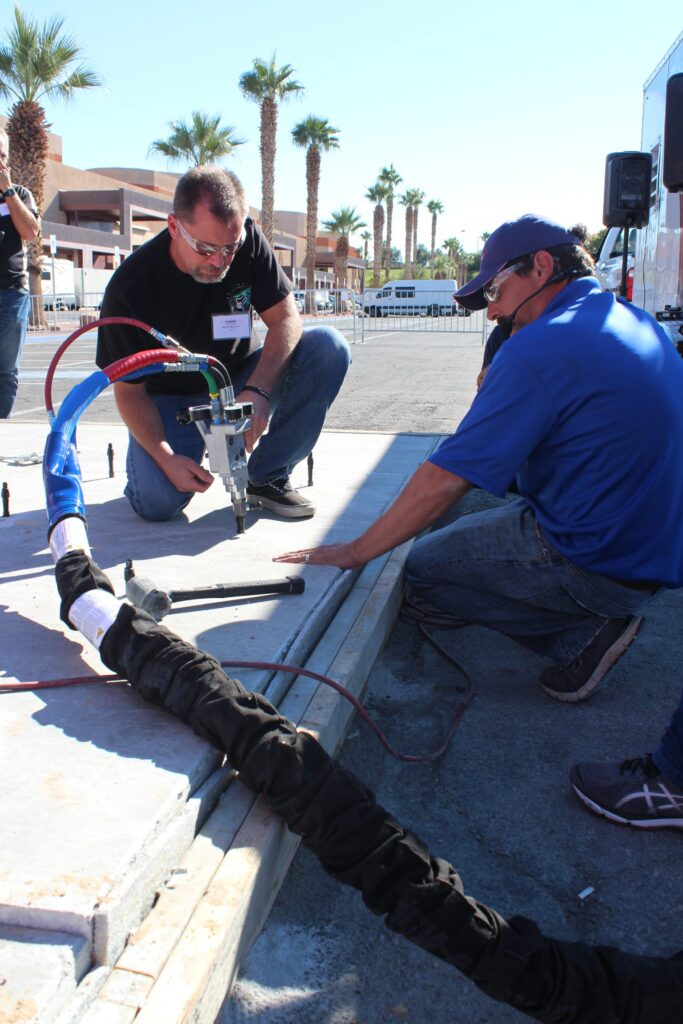Revolutionizing Concrete Sidewalk Repair: HMI’s Polyurethane Solution for Residential and Commercial Spaces
Concrete sidewalks are integral to the infrastructure of both residential neighborhoods and commercial spaces, providing pathways for pedestrians and enhancing the overall aesthetic appeal. Over time, wear and tear can lead to cracks and uneven surfaces, necessitating repairs. In this blog post, we explore how HMI is transforming the landscape of concrete sidewalk repair using innovative polyurethane technology. Discover the key benefits and the step-by-step process that makes this method a game-changer for both residential and commercial environments.
The Polyurethane Advantage in Concrete Sidewalk Repair:
Polyurethane, a versatile and resilient polymer, has become a preferred choice for HMI in addressing concrete sidewalk issues. Let’s delve into the distinctive advantages that make polyurethane a superior solution for repairing both residential and commercial sidewalks.
Efficiency in Concrete Sidewalk Repair: Traditional sidewalk repair methods often involve extensive demolition, leading to disruptions in pedestrian traffic and prolonged project timelines. Polyurethane injections, however, are a more efficient alternative. The process requires minimal excavation, reducing downtime and allowing sidewalks to be swiftly restored to usability.
Versatile Application for Residential and Commercial Spaces: Polyurethane’s adaptability makes it suitable for repairing sidewalks in diverse settings, ranging from residential neighborhoods to bustling commercial areas. Whether addressing minor cracks or larger structural issues, polyurethane provides a versatile solution that can be tailored to the specific needs of each environment.
Long-lasting Durability for Concrete Sidewalks: Polyurethane’s exceptional durability ensures long-lasting results for concrete sidewalks. The injected material expands, fills voids, and stabilizes the underlying soil, creating a robust and enduring repair. This durability is crucial in high-traffic areas, such as commercial districts, where sidewalks endure constant wear and tear.
The Concrete Sidewalk Repair Process:
HMI follows a systematic process when employing polyurethane for repairing concrete sidewalks. Here are the key steps involved:
Thorough Sidewalk Inspection: Trained professionals conduct a comprehensive assessment of the concrete sidewalk, identifying cracks, uneven surfaces, and areas in need of repair.
Strategic Access Hole Drilling: Small access holes are strategically drilled along the damaged sections of the sidewalk, ensuring precision in the injection process.
Polyurethane Injection Customized to Sidewalk Needs: Specially formulated polyurethane is injected into the identified areas, expanding to fill voids and providing stability to the sidewalk structure.
Efficient Curing and Cleanup: Polyurethane cures rapidly, forming a resilient bond within the cracks and voids. Once cured, the access holes are patched, leaving behind a seamlessly repaired sidewalk.
As HMI continues to innovate in the realm of concrete sidewalk repair, the integration of polyurethane technology stands out as a transformative solution. Homeowners and business owners alike can benefit from the efficiency, versatility, and durability that polyurethane brings to sidewalk repairs. Embracing this advanced method ensures that sidewalks in both residential and commercial settings remain safe, aesthetically pleasing, and capable of withstanding the rigors of daily use for years to come. Contact HMI to learn more.

